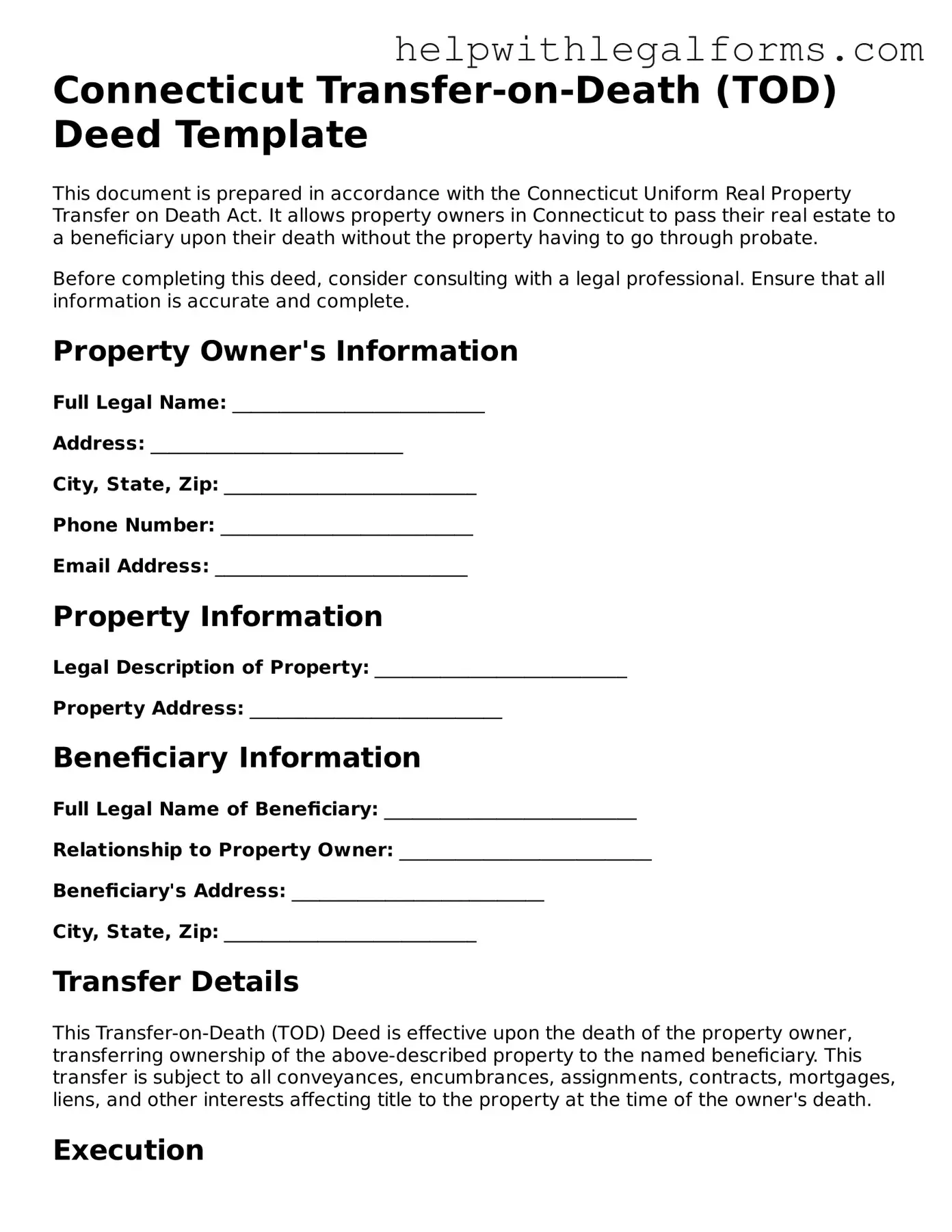Connecticut Transfer-on-Death (TOD) Deed Template
This document is prepared in accordance with the Connecticut Uniform Real Property Transfer on Death Act. It allows property owners in Connecticut to pass their real estate to a beneficiary upon their death without the property having to go through probate.
Before completing this deed, consider consulting with a legal professional. Ensure that all information is accurate and complete.
Property Owner's Information
Property Owner's Information
Full Legal Name: ___________________________
Address: ___________________________
City, State, Zip: ___________________________
Phone Number: ___________________________
Email Address: ___________________________
Property Information
Property Information
Legal Description of Property: ___________________________
Property Address: ___________________________
Beneficiary Information
Beneficiary Information
Full Legal Name of Beneficiary: ___________________________
Relationship to Property Owner: ___________________________
Beneficiary's Address: ___________________________
City, State, Zip: ___________________________
Transfer Details
Transfer Details
This Transfer-on-Death (TOD) Deed is effective upon the death of the property owner, transferring ownership of the above-described property to the named beneficiary. This transfer is subject to all conveyances, encumbrances, assignments, contracts, mortgages, liens, and other interests affecting title to the property at the time of the owner's death.
Execution
Execution
The property owner must sign and date this Transfer-on-Death Deed in the presence of a notary public.
Property Owner's Signature: ___________________________ Date: ________________
Notary Public Signature: ___________________________ Date: ________________
This deed is not valid unless properly executed and filed with the appropriate Connecticut County Recorder's Office.
Disclaimer
Disclaimer
This template is provided as a general guide and for informational purposes only. It is not a substitute for professional legal advice. Each situation is unique, and the laws and procedures may change. Always seek the guidance of a qualified professional when dealing with legal matters.
